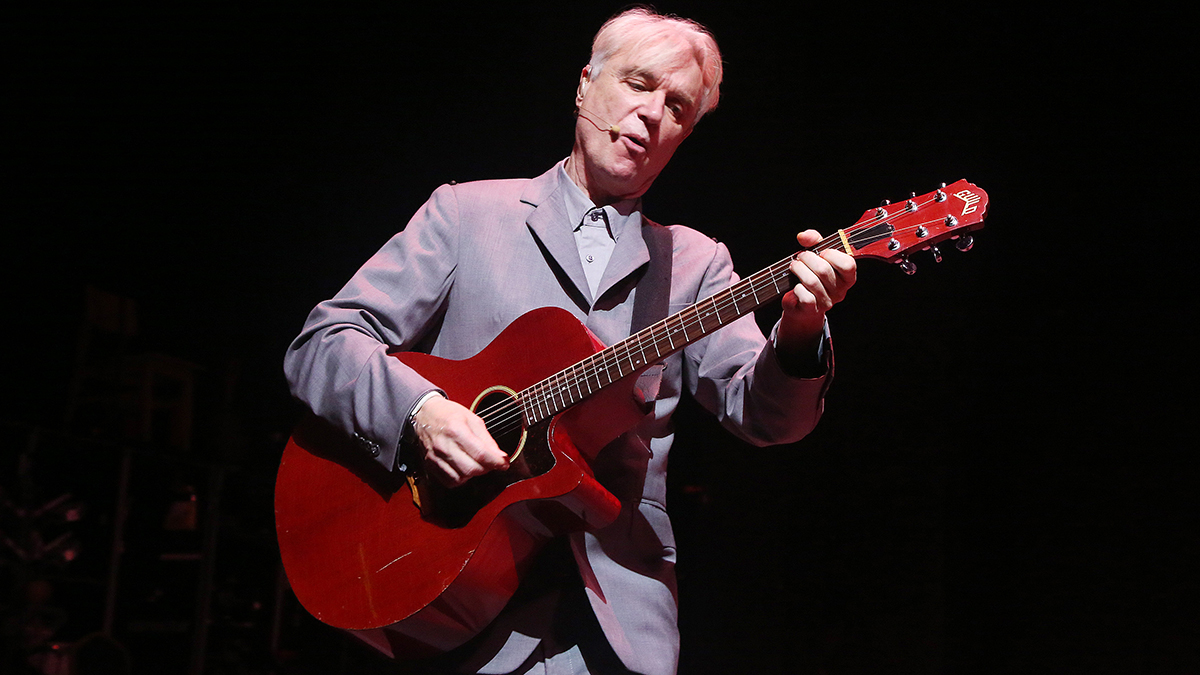David Byrne on working with Brian Eno: “Sometimes it's not that comfortable”
The former Talking Heads frontman also talks studio discomfort, the benefits of home recording and creating club smash Lazy with X-Press 2

From fronting Talking Heads to co-writing a dance music smash and creating a hit Broadway musical, David Byrne has done it all, so there was no shortage of stuff to talk about when he sat down with Zane Lowe on Apple Music 1.
Part of the discussion focused on Brian Eno, who produced several Talking Heads albums and collaborated with Byrne on a solo record, 1981’s My Life In The Bush Of Ghosts.
“Brian is someone who besides just being very innovative, he pushes the people he works with to go a little bit outside of their comfort zone,” says Byrne. “He's done that with me, done it with Talking Heads, which is really productive.
“Sometimes it's not that comfortable but… One of the ways that Brian navigates that kind of thing, and I think all producers do this to some extent is, they're great cheerleaders. They're great salesmen, saleswomen, whatever. So when something is in between stages, and it's not quite good yet, but it's getting to be something really interesting, they are jumping up and down going, ‘this is going to be amazing. This is going to be incredible. It's going to be like nothing else’. They keep the enthusiasm going so that you don't fall back and go, ‘I don't know’.”
Byrne also confessed that he hasn’t always felt comfortable in the studio, describing it as a “very strange environment”.
“You're kind of isolated from the other players in a way that allows the mixer then to kind of correct or fix or adjust the balance of instruments,” he explains. “But in order to do that, you're kind of isolated. You're hearing from headphones. You're not exactly playing in the room, but you're in the same room. It's all those kinds of things.
“I find that, with the advent of kind of home recording, being able to record using software and laptop and all those kinds of things, I can get half of the recording done at home and then bring it into a studio to complete it, which makes me a lot more comfortable.”
Get the MusicRadar Newsletter
Want all the hottest music and gear news, reviews, deals, features and more, direct to your inbox? Sign up here.
Dance music fans, of course, will remember Byrne for his collaboration with X-Press 2, which yielded the huge club hit Lazy in 2002.
“The experience of working on the song with X-Press 2 was really interesting,” Byrne told Lowe. “I was fans of all of them, and their DJ work, and their remixes, and all the stuff they were doing.
“When they approached me, I said, ‘Yeah. Let's try something’. The track they originally sent me sounded kind of Talking-Heads-ish. That's what they sent. I thought, ‘OK’, and I kind of wrote to that.
“Then, as they would do, because they're remixers and DJs, they remixed the whole thing, removed almost all of those elements, and replaced them with the stuff that's in the track that we know.
“It was much better. Yeah. It didn't sound like a throwback anymore. It sounded like, ‘this is a new thing’, and it's… They kind of tricked me, but I went along with it. To my great relief, it actually led to something completely different. I thought, ‘This is a dance track. Let me write a dance track about being lazy’, which is a complete contradiction. If you're dancing, you're full of energy. But I thought, ‘Let me write an energetic dance track about being lazy and lethargic’.
You can check out the interview with Zane Lowe on Apple Music 1.



I’m the Deputy Editor of MusicRadar, having worked on the site since its launch in 2007. I previously spent eight years working on our sister magazine, Computer Music. I’ve been playing the piano, gigging in bands and failing to finish tracks at home for more than 30 years, 24 of which I’ve also spent writing about music and the ever-changing technology used to make it.
“I’d be running from the studio to other speakers in the house, basically going insane trying to get mixes to sound correct”: Ezra Collective’s Joe Armon-Jones on why he created his Aquarii Studios and his dub-influenced mixing technique
“I haven’t been able to see the performance, but I have enjoyed it”: Elton John tells audience at Devil Wears Prada premiere that he’s lost his sight









